|
|
Blending In
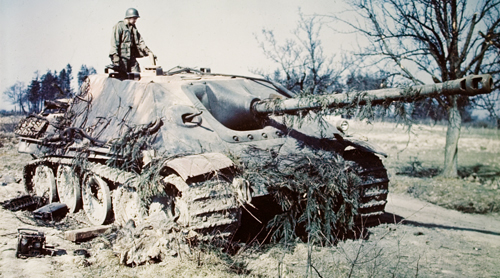 |
Blending In:
Using Foliage To Camouflage Your Tanks
with James Brown
As Monty Python told us, camouflage is the art of how not to be seen. One of the simplest ways to achieve this, when driving around in a natural environment, is to take some of that environment with you.
|
So naturally, a popular method of concealing vehicles has long been to
attach pieces of the readily available local greenery. This is not the
easiest thing to recreate in miniature on wargaming models, but with the
right products and a bit of effort, you can dramatically enhance the
look of your army.
A wide range of artificial foliage is available, in a variety of
colours, styles and materials. A good hobby store should have everything
you need.
|
 |
The best scenic materials have traditionally come from model
railroading suppliers, but that is gradually changing, as more products
are appearing tailored specifically to wargamers’ needs.
Clump Foliage
The simplest way to model miniature greenery is clump foliage, chunks of suitably coloured foam rubber. It is easy to use, stands up fairly well to handling, and looks quite convincing – at least from a reasonable distance.
Right: The GF9 3 Colour Summer Clump Foliage. |
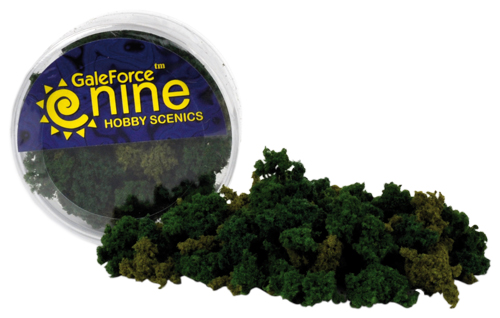 |
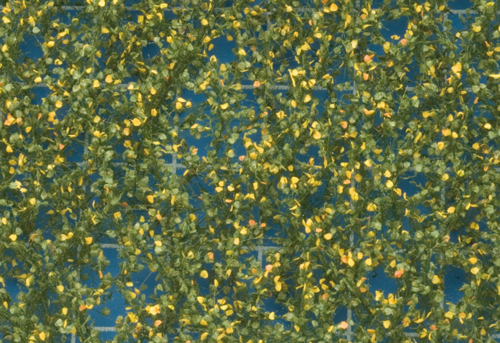
|
Leaf Foliage
You can now buy a variety of more advanced products featuring tiny scale leaves, attached to coloured sheets of a dense, fibrous backing - either rubberised horsehair or a synthetic equivalent. The backing is fairly stiff, and can be stretched apart, bent or crushed into shape. Leaf foliage takes a bit more effort to use, and is a little less robust than foam clump-style products, but this is justified by the realistic and eye-catching results.
Left: An example of some leaf foliage.
|
A Question of Scale
Because it was designed for model railroad enthusiasts, many manufacturers will describe the size of the foliage in terms of a model railroad gauge (HO, N, etc.). It is easy enough to find out what actual scales these refer to, but it is better to simply trust your own aesthetic judgment. As long as the scale of the foliage looks right to you, that’s good enough.
Right: Laser-cut paper leaves: attractive but
impractical.
|
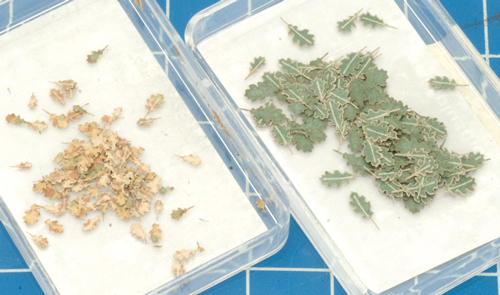 |
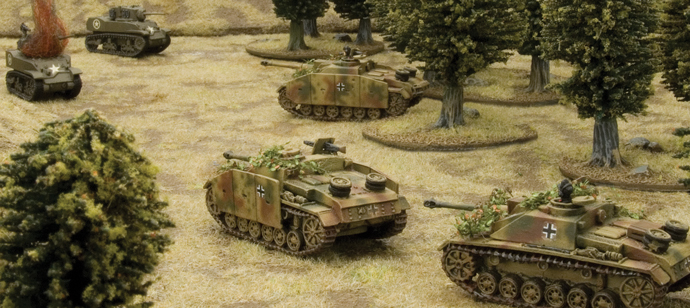 |
| Consistency of scale is always crucial for
creating realistic-looking models. But with the varied, organic forms of
vegetation, minor deviations from correct scale are much less
apparent than with man-made objects. Unless you happen to be a botanist,
you probably don’t need to be hung up on slightly oversized leaves.
Nevertheless, try not to choose a product obviously intended for much
larger scales than your models. Generally speaking, for 15mm vehicles,
the smaller the leaves the better. |
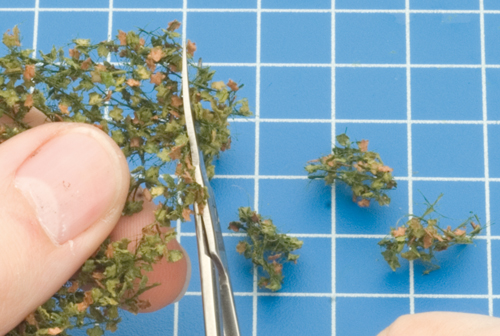 |
Applying Leaf Foliage
After choosing a style of leaf foliage suitable to the them of your army, use small scissors or a sharp hobby knife to cut the fibre backing, separating manageable clumps from the sheet. Try to pinch, stretch and trim them into realistic-looking bunches. Using tweezers can help.
Left: Remember, vehicle crews tended to attach branches, not whole trees, so vary the size but try not to make them comically large.
|
Branching Out
You can create an even more natural effect by adding skeletal branch structures. A variety of commercial products are available from your local hobby store or the Internet, including plastic model trees, photo-etched brass, and a kind of dried seaweed which closely resembles tree branches. For a cheap but laborious option, you can twist into appropriate shapes and paint it brown.
|
Below: Some branch options: Plastic tree pieces, twisted wire, twigs and dried plant roots.
|
 |
| Plenty of free options can be found in your garden, such as small pieces
of twig, or even plant roots - with the dirt carefully cleaned away, of
course. Whatever you find, it must be fine enough to look reasonably
scale-appropriate, but not too delicate to survive the rigours of
gaming. Allow the stuff to dry thoroughly, and if it is still too soft,
it can be stiffened with one or two thinned-down coats of varnish or PVA
white glue. This will help to strengthen your branches somewhat, but
they will remain fairly fragile, so handle them carefully. |
Below: Glue leaf foliage to your branches, adding a small section at a time.
|
 |
Making it Stick
You can’t attach your foliage until after the model is painted, so you must take extra care not to ruin your hard work. PVA white glue is the best choice, as it won’t damage the paint or make too much of a mess. Carefully apply just enough glue to hold your plants in place, and allow the glue to dry fully before handling the model. PVA has a slight shine when it dries, so you may want to give the model, including the foliage, a light spray with a good aerosol matt varnish. Cyanoacrylate (Super Glue) is not recommended, as the fumes can sometimes create a white ghosting effect, spoiling your careful paint job.
Use reference photos to help you decide how much foliage to apply, and where to place it. Your camouflage will survive better if you can choose positions on the vehicle which don’t need to be handled too much during gaming.
|
American Vehicle Examples
|
Below: M8 Scott with a light covering of leaf foliage.
|
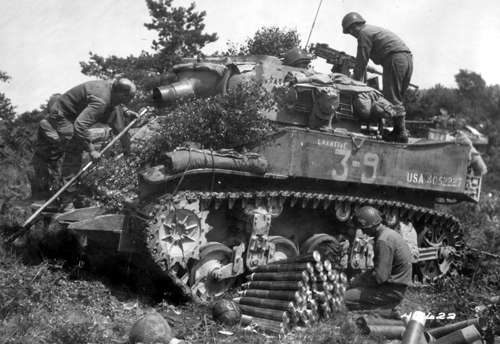 |
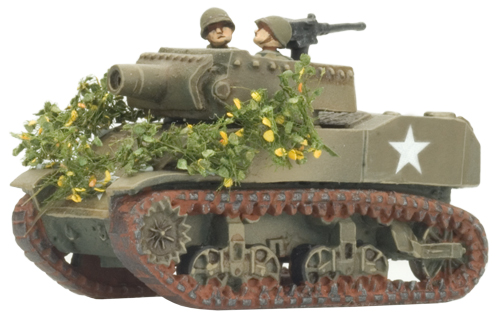 |
Below: M5 Stuart with a more generous covering.
|
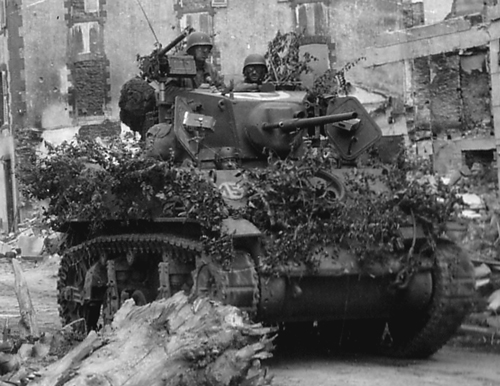 |
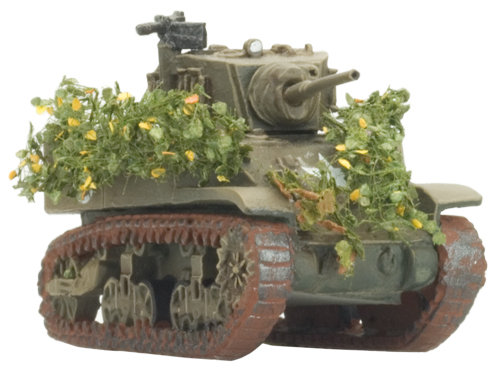 |
Below: An American tank so densely covered with leaf foliage and root and twig branches, it is almost invisible. (One might almost mistake it for an M10 GMC!).
|
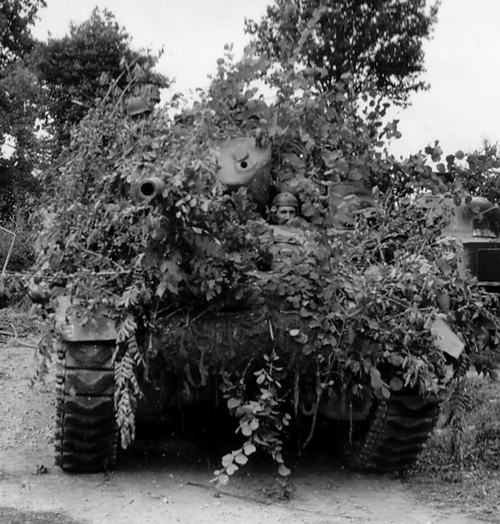 |
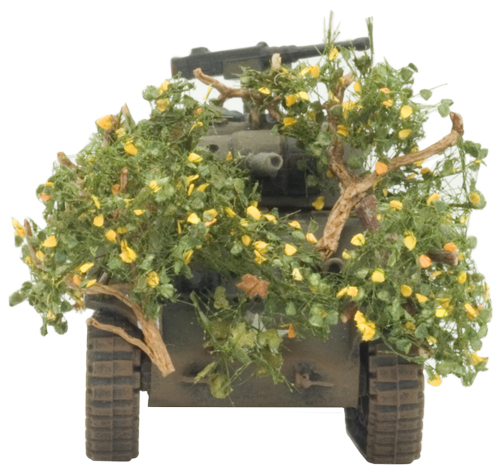 |
Below: Panther G with several colours of leaf foliage and dried-seaweed branches.
|
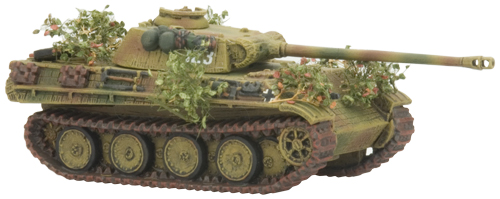 |
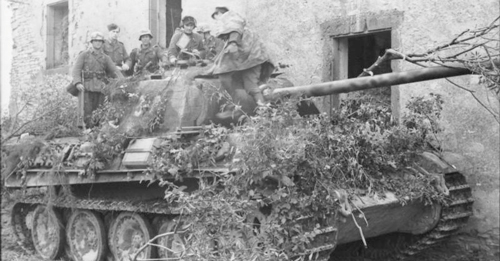
|
Below: Jagdpanther with leaf foliage carefully arranged along the gun barrel.
|
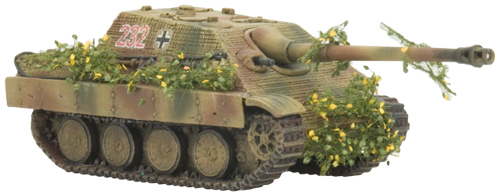 |
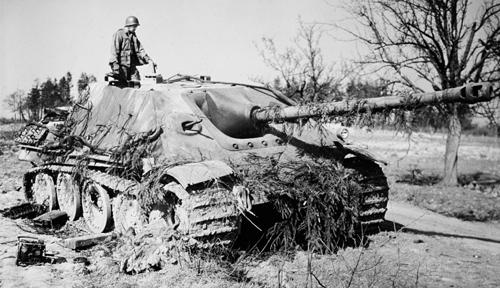 |
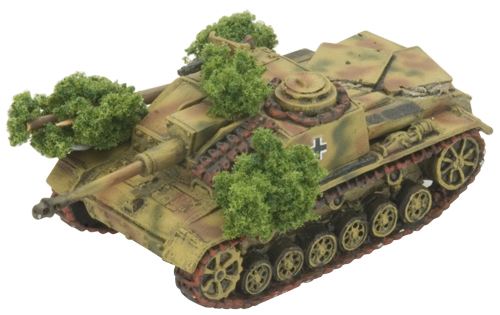 |
As with any modelling project, it is a good idea to begin by doing some research. Good reference material will always help you get more convincing results. But remember, historical photographs are only a guide, and the only real limit should be your imagination (within reason, of course – you’re not staging Macbeth, so try not to transform your army into a mobile forest).
Now you know how not to be seen, you can have hours of fun cleverly concealing your tanks and other vehicles. Just be careful not to lose them on the table!
~ James.
|
|
|